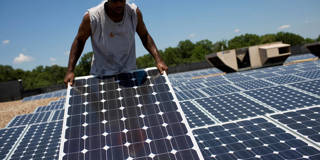Multilateral finance institutions have committed to mobilizing capital from private investors, largely through so-called blended finance, in order to fund climate action and achieve the Sustainable Development Goals. To succeed, these institutions may need to start functioning more like private investment organizations themselves.
BEIJING – The conclusion of the United Nations Intergovernmental Panel on Climate Change’s most recent report is stark: climate action is far more urgent than previously believed, and it must include a wide range of initiatives, from improved regulation to continued technological innovation. But without massive amounts of long-term “patient” capital – which only institutional investors can muster – it will be impossible to transform energy systems fast enough to mitigate the risk of ecological, economic, and social disaster.
Technically, institutional investors – such as pension funds, sovereign wealth funds, and insurance companies – hold sufficient financial firepower to address climate change, and some are seeking to align their portfolios with the UN Sustainable Development Goals (SDGs). In OECD countries alone, institutional investors control an estimated $92 trillion in assets. Annual official development assistance by multilateral finance institutions (MFIs) and governments amounts to just 0.16% of that – about $145 billion.
But, as commercial actors, institutional investors’ primary objective is to maximize financial returns. Even as some purge their portfolios of carbon-intensive companies, they generally consider investing in new clean-energy infrastructure projects to be too risky, particularly in emerging markets.

BEIJING – The conclusion of the United Nations Intergovernmental Panel on Climate Change’s most recent report is stark: climate action is far more urgent than previously believed, and it must include a wide range of initiatives, from improved regulation to continued technological innovation. But without massive amounts of long-term “patient” capital – which only institutional investors can muster – it will be impossible to transform energy systems fast enough to mitigate the risk of ecological, economic, and social disaster.
Technically, institutional investors – such as pension funds, sovereign wealth funds, and insurance companies – hold sufficient financial firepower to address climate change, and some are seeking to align their portfolios with the UN Sustainable Development Goals (SDGs). In OECD countries alone, institutional investors control an estimated $92 trillion in assets. Annual official development assistance by multilateral finance institutions (MFIs) and governments amounts to just 0.16% of that – about $145 billion.
But, as commercial actors, institutional investors’ primary objective is to maximize financial returns. Even as some purge their portfolios of carbon-intensive companies, they generally consider investing in new clean-energy infrastructure projects to be too risky, particularly in emerging markets.